Things to Do in Okinawa, Japan’s Tropical Paradise With a Complex History
I was on a mission the first time I visited Okinawa.
My wife, Kuniko, is Japanese, from the island of Shikoku, and when her father turned 89, he told us the one place he most wanted to visit was the southernmost tip of Japan: Okinawa. For his 90th birthday, we created a trip for the three of us. In doing so, I discovered the most meaningful things to do in Okinawa are dependent on who is doing them.
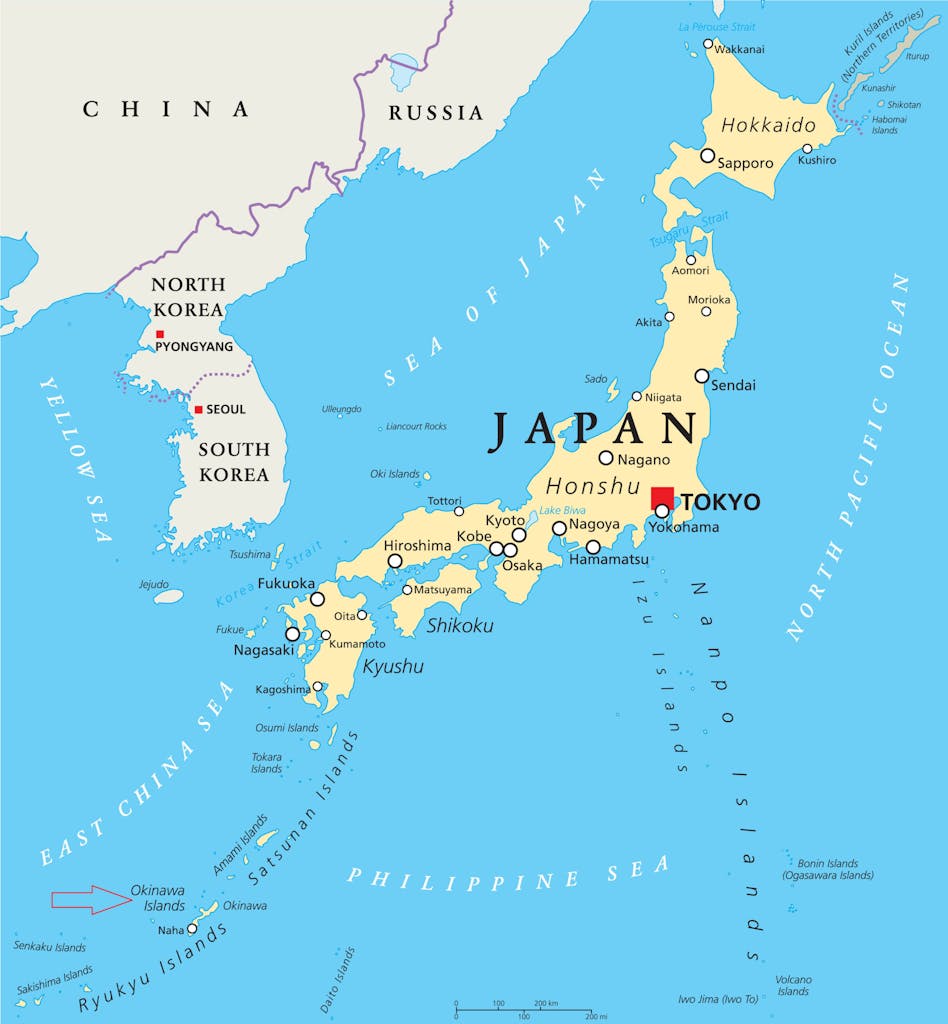
As an American, I pictured Okinawa as the clichéd tropical paradise. I dreamed of finding a perfect white-sand beach on a perfect stretch of blue-green sea, framed by a perfect line of waving palm trees. But as we prepared our travel plans, we realized that my father-in-law — Ojiichan, or Grandfather, as we called him — was making a pilgrimage of an entirely different kind: He wanted to honor the people who had suffered and died on the island during World War II.
That’s when I began to realize that there are many, distinctly different Okinawas.
An unexpected welcome
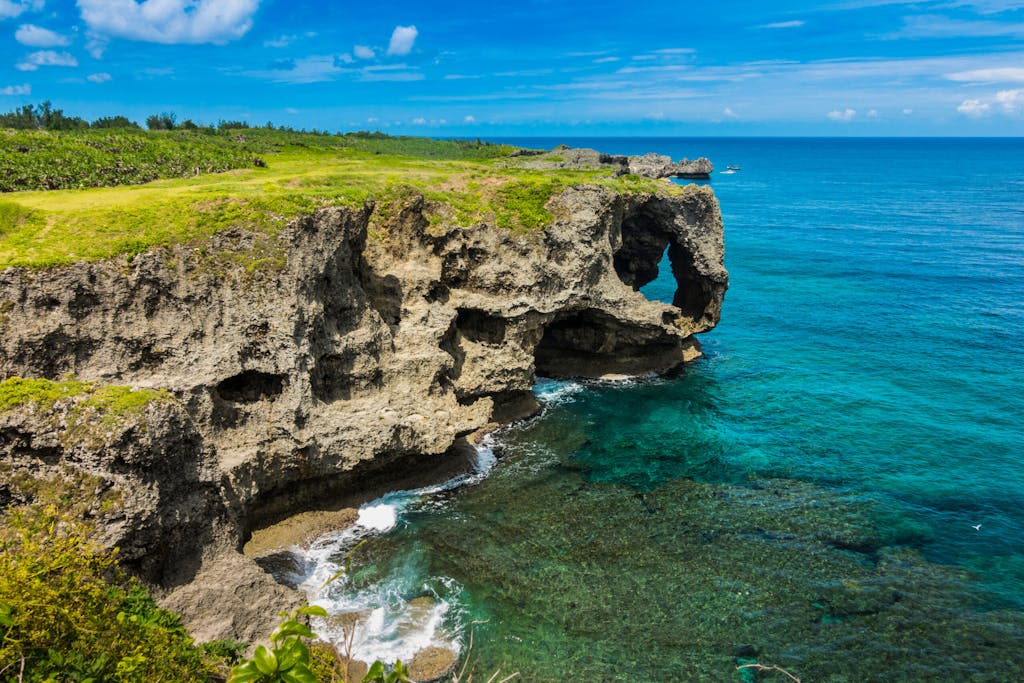
I had another surprise when we arrived. We were in Japan. The signs were in Japanese, the people were speaking Japanese yet it was distinctly different from the “mainland” Japan where I had lived and had come to know over three decades of travels here.
As we debarked the plane, we were caressed by soft, humid air that smelled faintly floral. Many of the people at the airport who were welcoming friends or family or saying goodbye to them seemed to move more slowly and gently than mainlanders, and they also seemed to embrace more readily. It felt warm and calm, and I could already feel myself slowing down and relaxing.
History lessons

We planned to begin our tour with Okinawa’s ancient history and then end with its more recent past. For our first stop Ojiichan chose Shuri Castle, where Okinawa’s royal family once lived.
As we drove to the site, Ojiichan gave us a quick course on Okinawan history. “No one knows when the first people settled here,” he told us, “but some of the castles on the islands go back to the 12th century, and three distinctive kingdoms came into power— in the northern, central and southern parts of this main island — from the 13th to 15th centuries.
“These three kingdoms were brought together by the king of the central territory in 1429, and the new kingdom was called the Ryukyu Kingdom.”
He paused. “Do you remember the name for these southern islands?” he asked me.
“The Ryukyu Islands,” I said, like a giddy schoolboy.
“That is correct,” he said, with a nod and slight smile.
“The Ryukyu Kingdom,” he continued, “thrived by trading with Japan, China and even countries as far as away as Thailand and the Philippines. During this period, a uniquely Okinawan culture developed, and we will see evidence of that in the days to come.
“In fact, the political and cultural center of this kingdom was Shuri Castle….The kingdom came under the rule of Japan in the 17th century, and its name was officially changed to Okinawa Prefecture in 1879.”
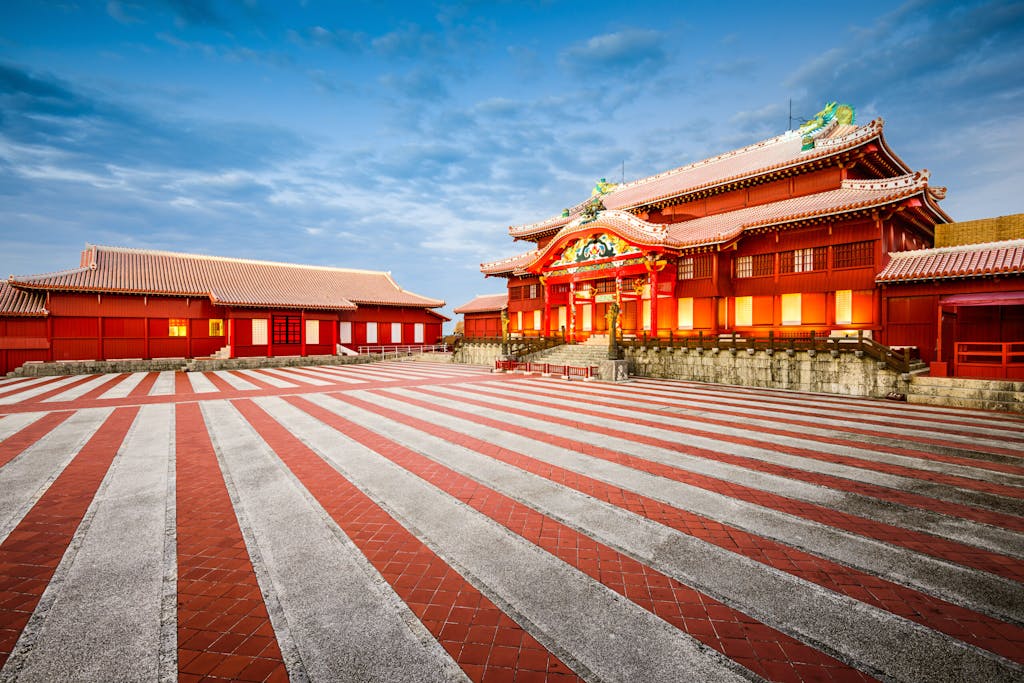
The castle dazzled us: Its brilliant vermilion walls and gates and gently sloping tiled roofs revealed the distinctive architectural influences of China and Japan, its two most powerful neighbors. Walking through the gates and around the grounds conjured images of ancient kings, exotic emissaries from abroad and elaborate court ceremonies.
Fire destroyed parts of the castle in 2019, and they are being restored, but the castle is still an evocative place to begin a historical tour of Okinawa.
If you arrive at 8:55 a.m., you can be part of a daily ceremony in which officials in traditional robes and headwear, accompanied by classical Ryukyuan court music and Uzagaku chamber music, open the castle gates.
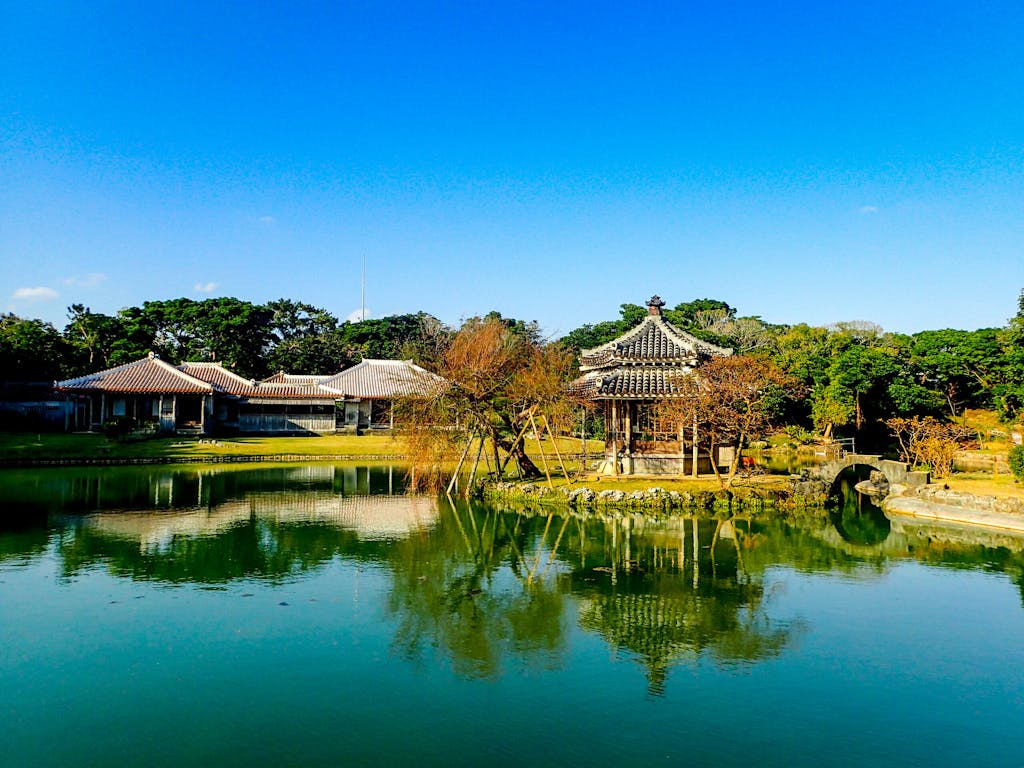
After the castle, we visited the nearby Shikinaen Garden, a traditional 18th-century Japanese circuit garden built as a second residence for the Ryukyu royal family. One highlight was a distinctively Okinawan red-tiled wooden palace, the setting of banquets for foreign dignitaries. “Imagine the lavish parties that took place inside these walls,” Ojiichan said.
As we continued to walk, he pointed out the Chinese-style arched bridges that crossed the garden’s central pond and two stone monuments engraved with messages from Chinese envoys. “Two great empires met here,” he said, gazing into the pond.
Ryukyuan traditions
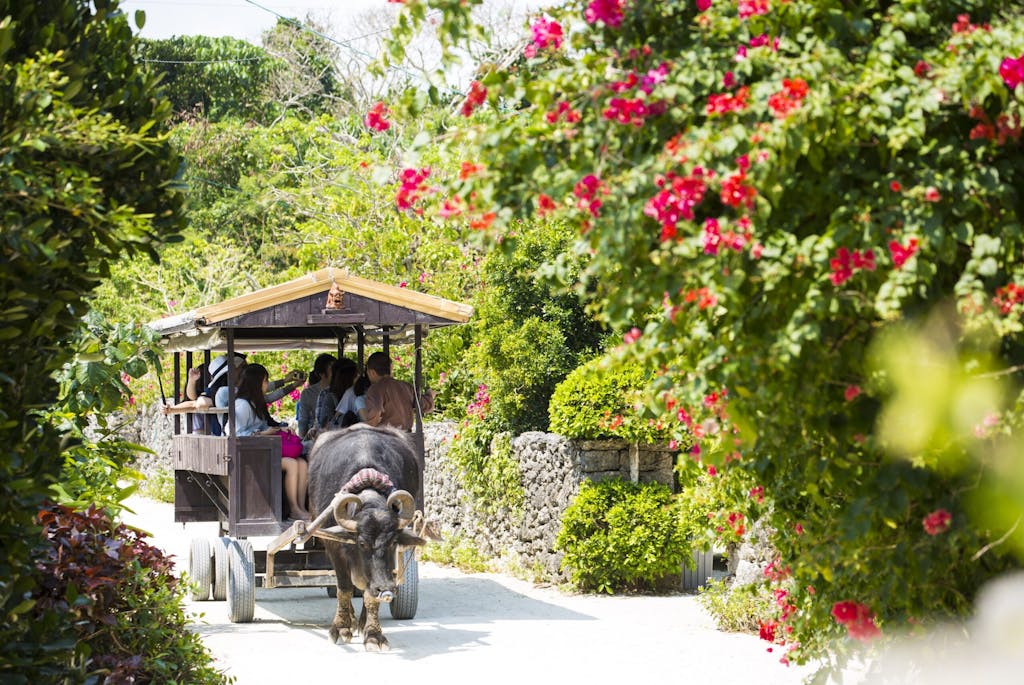
The next day, we continued our journey into the past by visiting Taketomi Island, flying for an hour to Ishigaki island, then taking a 15-minute boat ride to Taketomi. After arriving in Taketomi, we boarded a water buffalo-pulled cart — “This is the way the locals have traveled for centuries,” Ojiichan said — for a tour of a traditional Okinawan village. Winding along sandy, hibiscus tree-framed paths, we passed houses with red-tiled roofs topped with lion statues.

“Those are traditional shisa — they ward off evil spirits,” Ojiichan said of the lion statues. “Look closely at the walls. They look like stone, but see? They’re made of coral.”
That day we also had a chance to sample traditional Ryukyuan cuisine. For Kuniko, Ojiichan suggested the goya champuru, a mixed dish containing goya — a nubby, green gourd called bitter melon — along with eggs, tofu and pork. For me, he recommended the Okinawa soba (noodles made from white wheat flour rather than the mainland’s buckwheat flour), served in a broth of katsuobushi bonito fish flakes, konbu kelp, kamaboko fish paste and thin slices of pork spareribs. He gleefully tucked into a plate of rafute, tasty slabs of pork belly simmered in soy sauce and glazed with brown sugar. Delicious.
Crafts and completion
Back in Naha the next day, Ojiichan wanted to explore traditional Okinawan crafts, so we spent a leisurely afternoon at the Naha City Traditional Arts and Crafts Center. I loved the arayachi and joyachi (unglazed) pottery, which blends Chinese, Japanese and Korean influences.
The large, rustic arayachi glazed pieces, especially the earth-colored water jars and sake containers, had a powerful purity and simplicity. I especially prized the brightly glazed joyachi vases, teapots, bowls and plates, whose deep, vivid blues and reds seemed to capture the vivacious spirit of Okinawa itself.

We also saw some exquisite examples of glistening black and red Ryukyu lacquerware trays and vases, many decorated with graceful flowers; intricately stenciled and dyed Bingata cloth, flowing with vibrant fuchsia and lemon colors; and brilliant blue, red and green Ryukyu glassware.
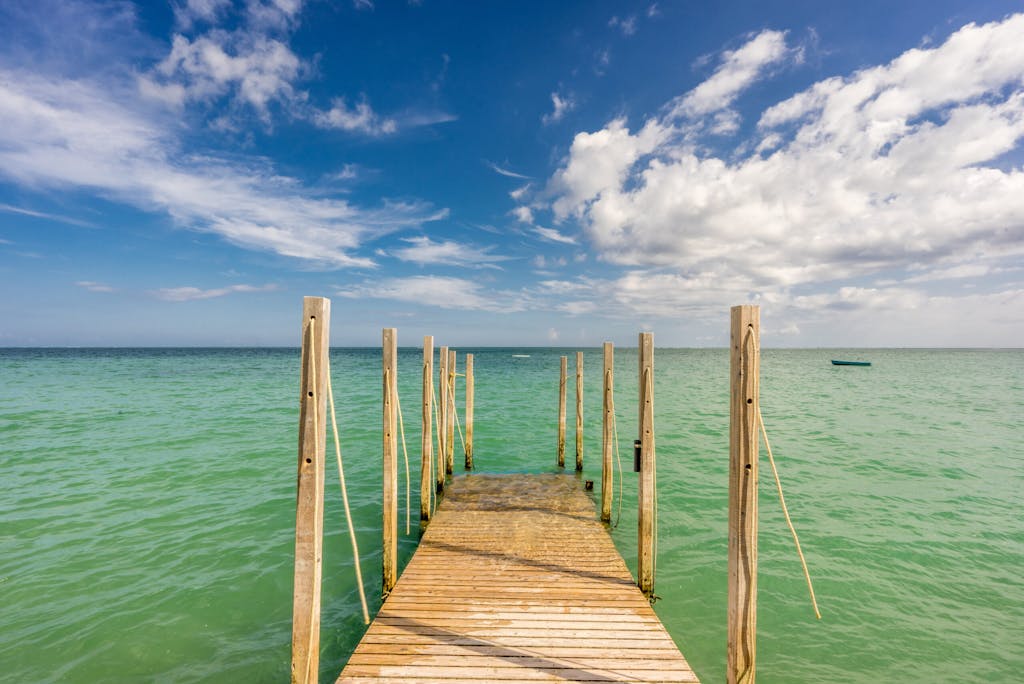
After another day devoted to snorkeling, beachcombing, and under-the-boughs napping on Mibaru Beach, we set off on our most important visit: the Okinawa Peace Memorial Park and the Okinawa Prefectural Peace Memorial Museum.
Before our trip, I understood that Okinawa was Japan’s most potent symbol of the complicated U.S.-Japan relationship. Forces from the two countries fought face to face during the three-month Battle of Okinawa that took more than 200,000 lives: 12,520 Americans, 94,136 Japanese soldiers and 94,000 Okinawan civilians, about a quarter of the prewar population.
The U.S. occupation of mainland Japan ended in 1952, but the U.S. retained control of Okinawa until 1972. Even when the island was officially returned to Japan, the agreement allowed 30,000 American military personnel to remain stationed there. They are still there today and still controversial among some Okinawans and mainland Japanese.
I knew our pilgrimage — Ojiichan, who had fought in World War II, his Japanese daughter and her American husband — would be multilayered.
We went directly to the Peace Memorial Museum, which is within the park. In five meticulously displayed rooms, the museum presented a moving introduction to the war: the history of conflict in Europe and Asia that led to the Battle of Okinawa, the progress of the battle, the almost impossible conditions everyday Okinawans endured during the fighting, personal civilian testimonies about the war and the difficult journey of post-war occupation and reconstruction.
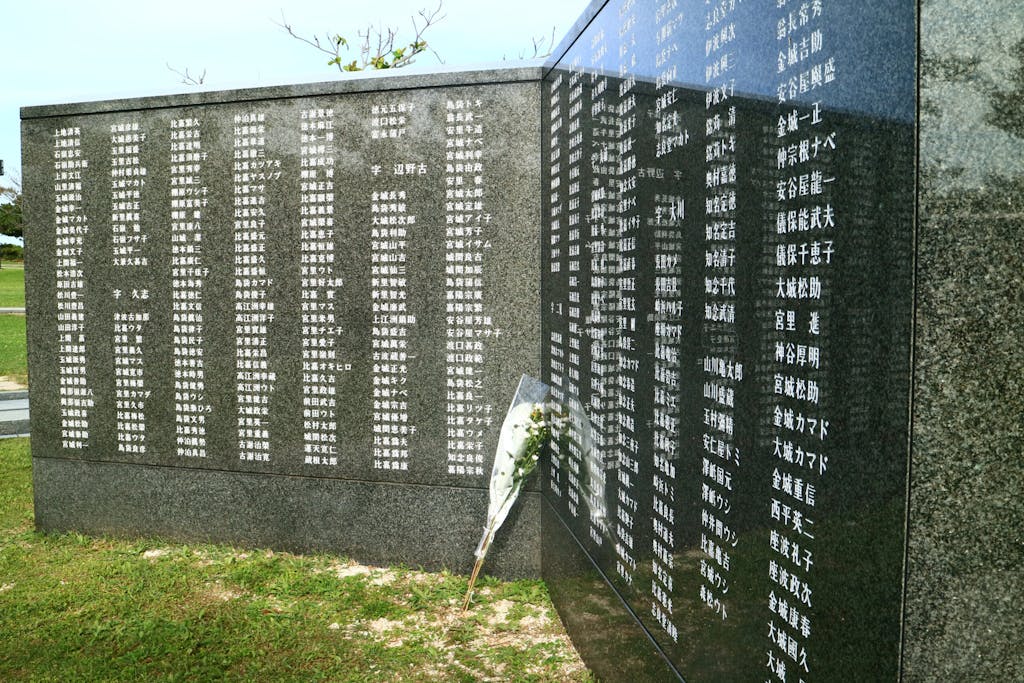
Filled with the weight of that history, we moved outside to the Cornerstone of Peace, a green hillside lined with rows of zigzagging black stone slabs on which are written the names of all those who died in the Battle of Okinawa: Japanese, American, British, Korean and Taiwanese soldiers as well as Okinawan civilians.
We walked slowly past the slabs, stopping occasionally to read a name. Nearby the sea glinted, and puffy white clouds drifted above us. When we came to the end, we stopped and turned back to the rows we had just passed.
I looked at Ojiichan. Tears glistened in his eyes and in mine. “So many lives,” he said.
I took Kuniko’s hand, and the three of us stood silently, together.
Finally Ojiichan turned to us. “Thank you,” he said, looking first at Kuniko and then at me. “I feel a kind of completion.”
I thought about war and peace, about the death that had darkened this beautiful land, and about the three of us pilgrims, emissaries from lands that had once been enemies, now here together, symbols, I hoped, of a better world to come.
Perhaps Ojiichan felt something similar. As he peered into my eyes, he bowed slightly and said, “I am happy that we could come here together.”
Are you eager to experience all the amazing things to do in Okinawa? Explore Japan and Asia with Silversea.
Don George is the author of the award-winning anthology “The Way of Wanderlust: The Best Travel Writing of Don George” and of “How to Be a Travel Writer,” the best-selling travel writing guide in the world. He is Editor at Large for National Geographic Travel and has been Travel Editor for the San Francisco Examiner & Chronicle, Salon and Lonely Planet. Besides writing and editing, he teaches and leads travel writing workshops in Paris and California.
